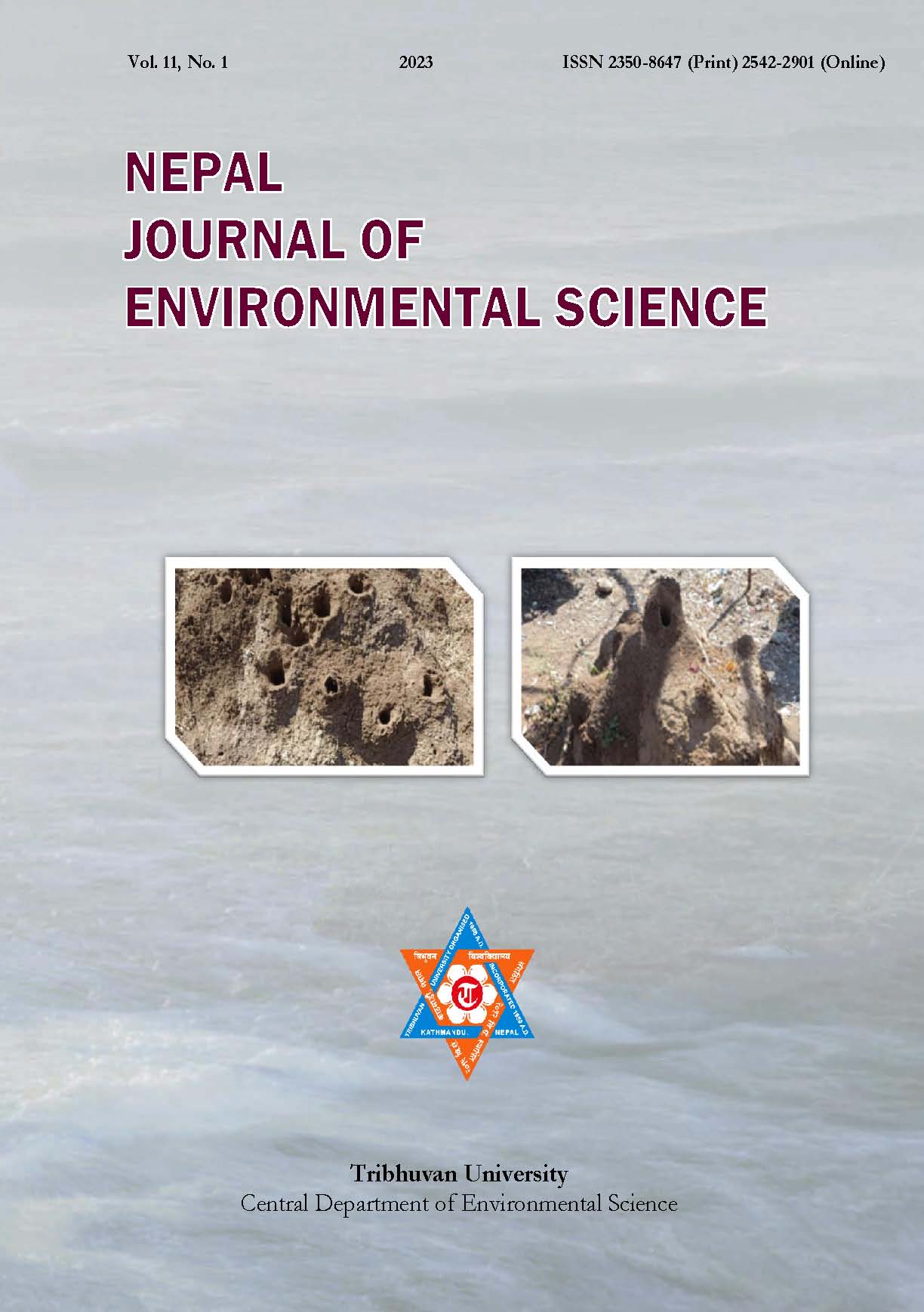Quantification and characterization of household solid waste at urban area of Kathmandu
DOI:
https://doi.org/10.3126/njes.v11i1.50949Keywords:
Characteristics, management, organic waste, per capita waste, waste segregationAbstract
Solid waste management can have significant positive and negative implications to the physical, social and economic environment and these implications are the function of management options adopted. The quantity and character of the waste generated changes with time and understanding these properties of waste in a locality form the basis of solid waste management. Thus, this research aims to understand the rate of solid waste generation in Kathmandu Metropolitan City, Ward 31, Shantinagar, and characterize the waste based on composition and management options. Waste generated by 100 households in 24 hours was collected, segregated, and weighed to quantify and characterize the waste generated at household level. Furthermore, an in-person interview was conducted with the household representatives using a semi-structured questionnaire to understand the options used for solid waste management at household level and their willingness to participate in waste segregation at source. The percentage composition of each waste category and per capita waste generated at household level was calculated. The relation of the per capita waste with number of family member was modeled by using linear regression. Data analysis was performed by using Microsoft Excel and R software. Significant fractions of the waste generated in the households were organic waste followed by paper waste which together makes up nearly 51% of total weight of the solid waste generated in the area. Per capita waste generation was found to be 402.7 grams per person per day. Per capita waste generation was a function of the number of family members with a decrease in per capita waste by an average of 111 g with an increase in one member in a family. Households who are involved in rooftop farming were segregating waste at the source indicating the local government can encourage rooftop farming to promote waste segregation at source.
Downloads
Downloads
Published
How to Cite
Issue
Section
License
Copyright (c) 2023 Central Department of Environmental Science, Tribhuvan University

This work is licensed under a Creative Commons Attribution-NonCommercial 4.0 International License.
This license enables reusers to distribute, remix, adapt, and build upon the material in any medium or format for noncommercial purposes only, and only so long as attribution is given to the creator.

